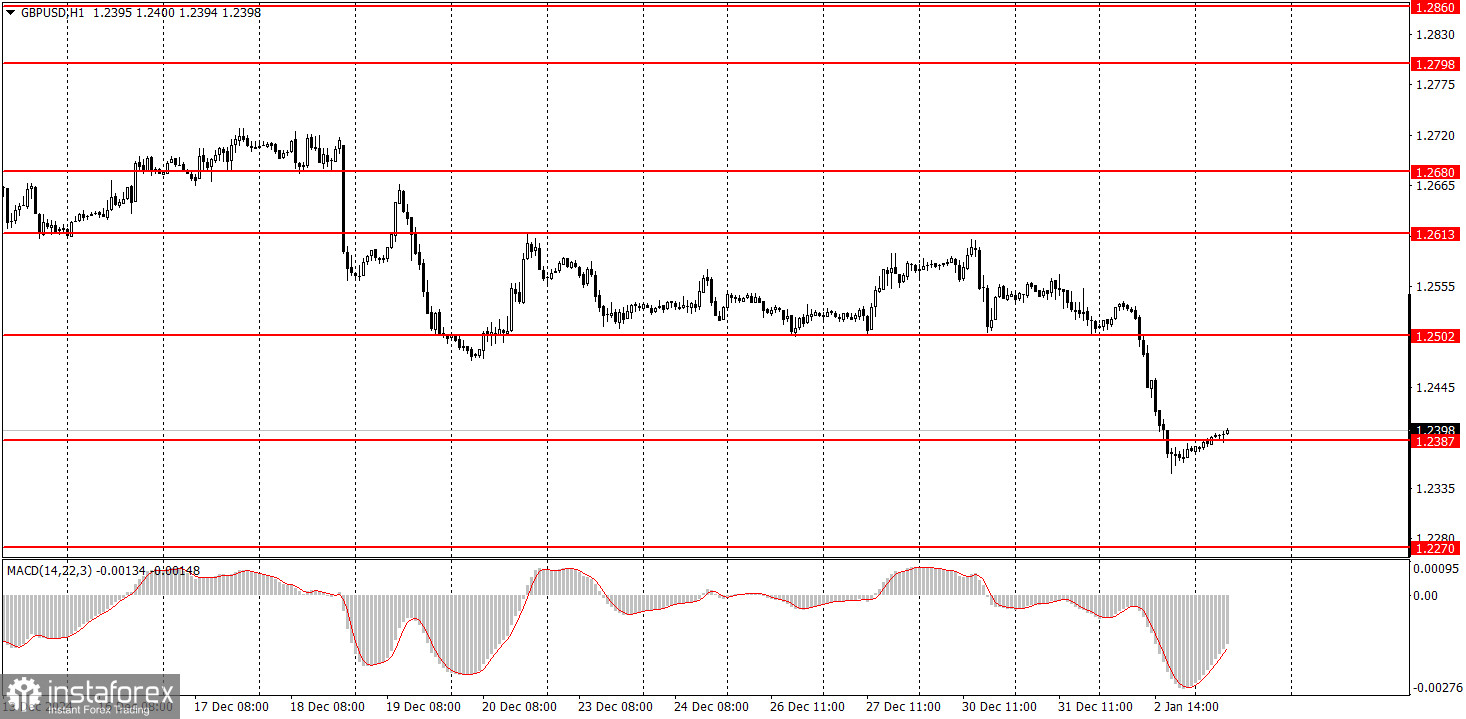Analysis of Macroeconomic Reports:

There are relatively few macroeconomic events scheduled for Friday, as the holiday season is not yet over. However, one report stands out that could significantly impact the market: the US ISM Manufacturing Index. It is expected that the index will show no major changes for December, remaining within the range of 48.3 to 48.5. Nonetheless, traders may interpret the situation differently. Given the neutral forecasts, it could be easier for the actual data to deviate from the projections. As a result, we anticipate strong market movements during the US trading session. Additionally, Germany will release unemployment and jobless claims data, although these reports are considerably less influential.
Analysis of Fundamental Events:

Currently, there is not much to highlight regarding fundamental events on Friday. However, the market doesn't seem to require any new speeches or comments from central bank representatives about monetary policy, as indicated by Thursday's trading activity. All three major central bank meetings have recently concluded, and market participants have already received detailed information about economic conditions and the future actions of these banks. We believe these meetings conveyed a clear message to traders: the US dollar is likely to strengthen further.
General Conclusions:
On the last trading day of the week, traders can reasonably expect upward corrections in both currency pairs, at least until the US trading session begins. After that, the outcome will largely depend on the US ISM Manufacturing Index report, which could lead to either a rise or fall in the dollar's value.
Key Rules for the Trading System:
- Signal strength is determined by the time it takes for a signal to form (bounce or breakout of a level). The shorter the time, the stronger the signal.
- If two or more false signals are generated near a level, subsequent signals from that level should be ignored.
- In a flat market, any pair may produce numerous false signals or none at all. In such cases, it's better to stop trading at the first signs of consolidation.
- Trades should be opened during the European session through the middle of the American session. All trades should be manually closed thereafter.
- On the hourly timeframe, trades based on MACD signals should only be executed during periods of strong volatility and trends confirmed by trendlines or trend channels.
- If two levels are very close (5–20 pips apart), they should be treated as a support or resistance zone.
- After a 15–20 pip movement in the correct direction, set a Stop Loss at breakeven.
What's on the Charts:
Support and Resistance Levels: Targets for opening buy or sell orders. These are ideal points for setting Take Profit levels.
Red Lines: Trendlines or channels reflecting the current trend direction and indicating the preferred trading direction.
MACD Indicator (14,22,3): A histogram and signal line serving as auxiliary indicators and sources of signals.
Key News Events and Reports: Always listed in the economic calendar, these can significantly impact currency pair movements. Exercise caution or exit the market during such events to avoid sharp price reversals.
Every trade cannot be profitable. The key to long-term success in Forex trading lies in developing a clear strategy and effective money management.





















